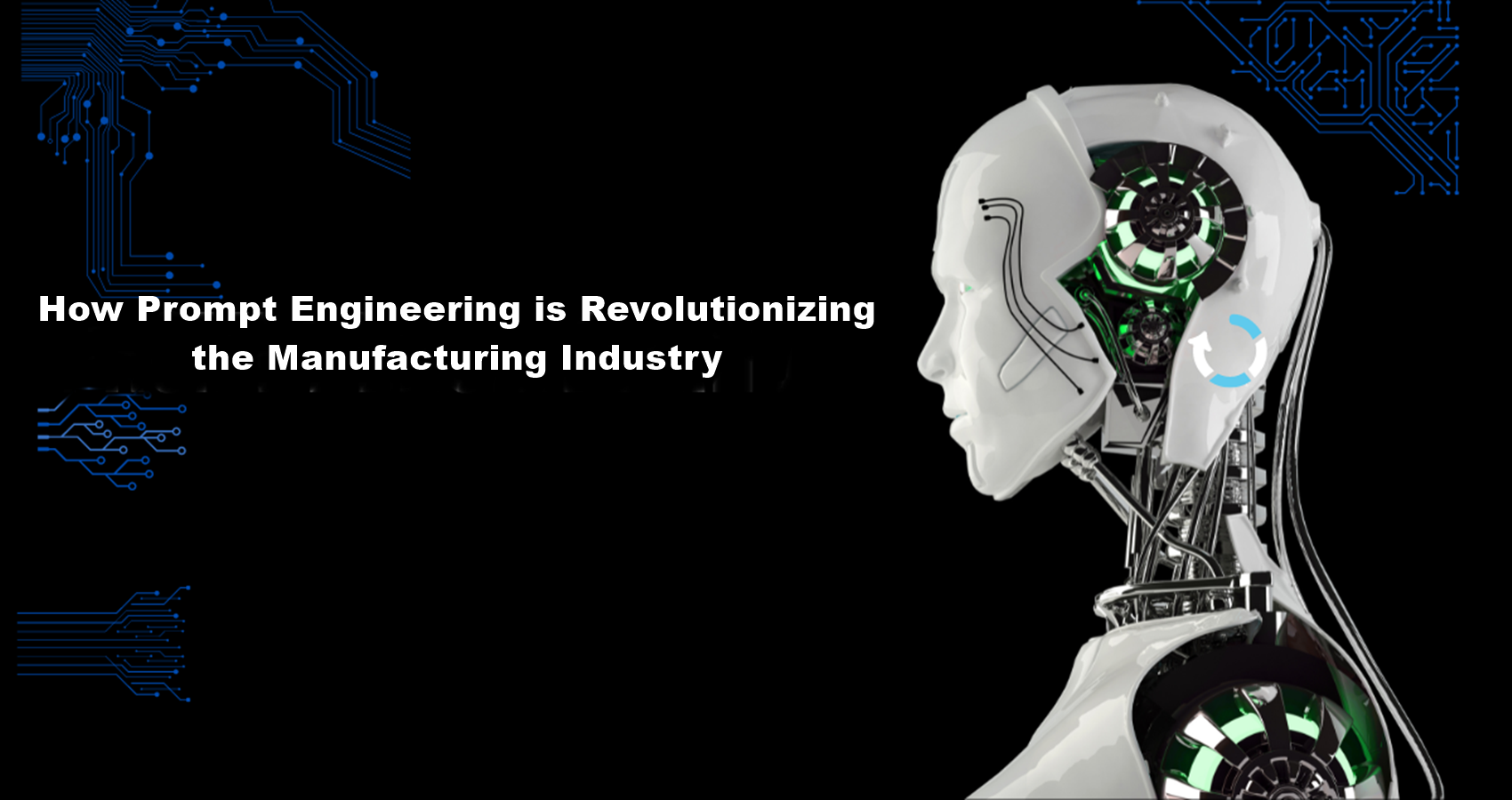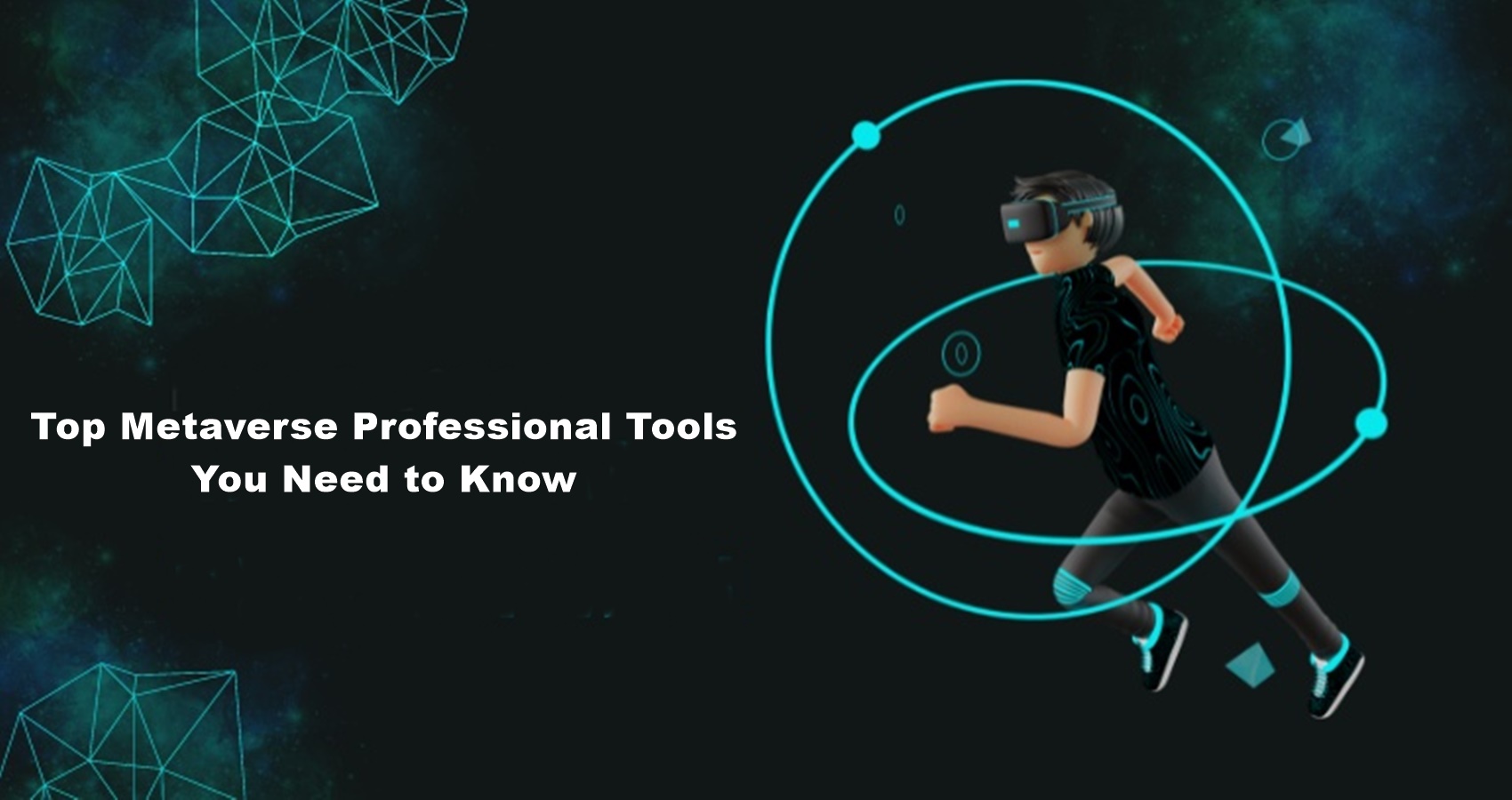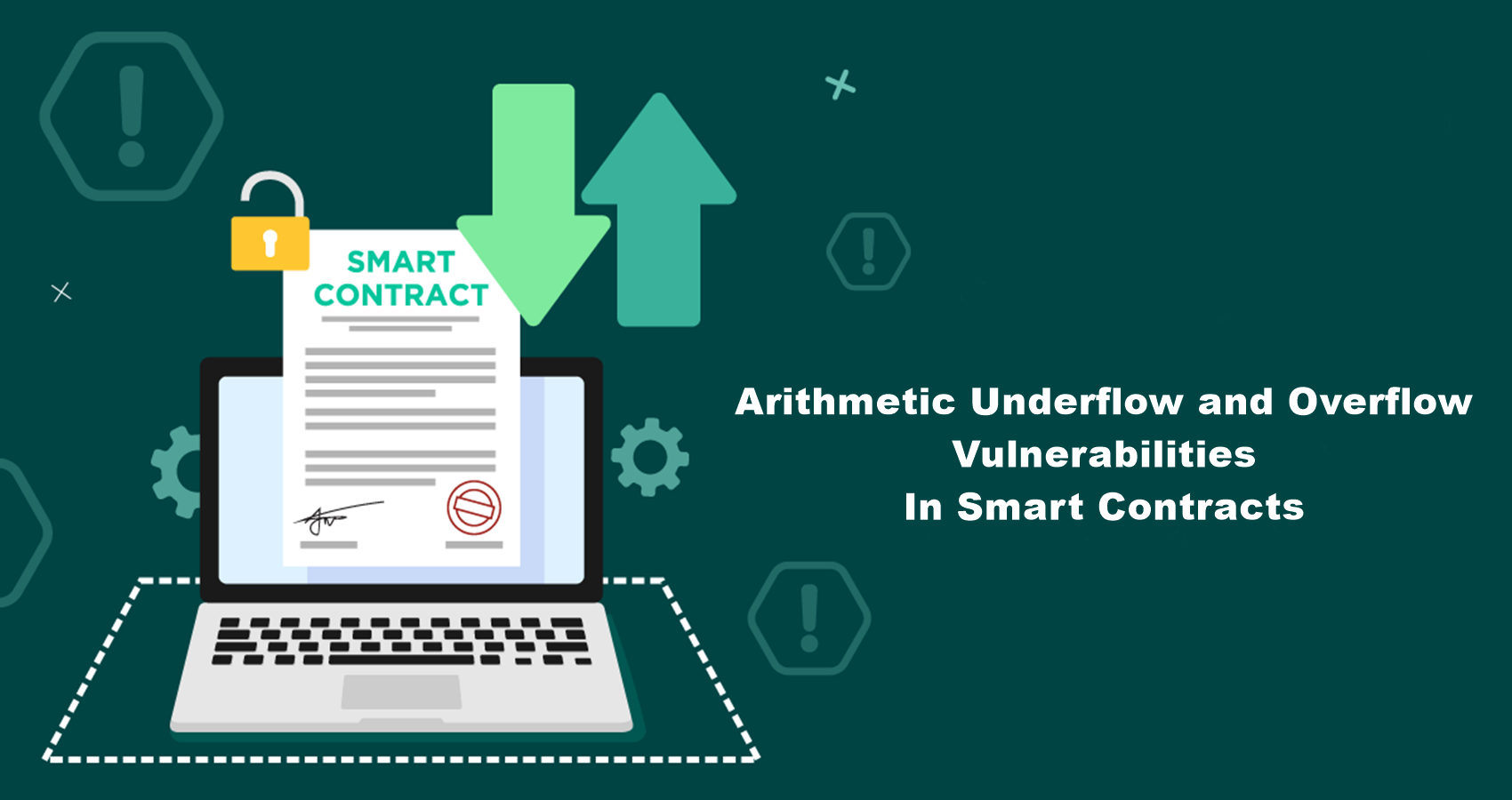Transportation is vital for commerce and human civilization. But issues like traffic congestion, road safety, and pollution make mobility inefficient today. Artificial intelligence promises to transform transportation and address these pressing challenges through breakthroughs like self-driving cars and smart city traffic optimization. In this comprehensive guide, we’ll explore the current and future applications of AI across all facets of transportation including autonomous vehicles, traffic management systems, mobility services, logistics, infrastructure maintenance and more. We’ll also discuss some promising startups bringing AI innovations to solve problems in transportation. AI’s Role in Achieving Automated Mobility Achieving fully autonomous transportation is a complex AI challenge requiring sensing, perception, planning, and control capabilities surpassing human drivers. AI techniques powering self-driving cars include: Companies like Waymo, Tesla, Cruise and Aurora are pioneering autonomous driving technology using AI. Billions of real-world miles driven provide data to continuously train their AI models. AI for Traffic Management and Mobility Optimization AI can also help coordinate and optimize mobility at a systemic level by monitoring and analyzing traffic flows. Intelligent Transportation System applications include: AI-coordinated intelligent traffic management maximizes road network utilization, reduces congestion, and increases mobility access across cities. AI for Safety and Assistive Features in Vehicles Within vehicles, AI powers driver assistance features enhancing comfort, safety and control: Such AI-enabled automated driving assistance systems (ADAS) are making vehicles safer and more convenient. Adoption is accelerating with levels of autonomy increasing gradually. Emerging AI Business Models for Mobility Services AI also enables emerging on-demand mobility services through better dispatching, routing, and utilization: AI-centric mobility platforms are driving a revolution in transportation-as-a-service for both passengers and goods. These data-driven approaches increase asset utilization, lower costs, and enhance reliability and convenience. Logistics and Supply Chain Optimization AI is also transforming logistics across air, sea and land freight transportation: Promising AI Startups in Transportation Several promising young startups are driving AI innovation across the transportation sector: These companies exemplify how AI-powered innovations across autonomous vehicles, traffic management, fleet optimization and robotics promise to enhance transportation efficiency, safety, accessibility and sustainability. Challenges for Mainstream AI Adoption Realizing the full potential of AI in transportation requires overcoming key challenges: With proactive public-private collaboration, steady progress on these fronts can enable scalable mainstream adoption of transformative AI mobility innovations in the 2020s. The Future of AI in Transportation Advances across sensing, connectivity, electrification and autonomy will unlock new paradigms in transportation: AI is crucial for creating sustainable, efficient and inclusive mobility systems that enhance quality of life and economic progress. Exploring the opportunities at the intersection of AI and transportation promises to accelerate solutions to stubborn transportation challenges that have persisted for decades. Key Takeaways To summarize the key points: Conclusion Transportation is a vital application domain for artificial intelligence. From enabling autonomous driving to coordinating smart infrastructure, AI is essential for the next phase of sustainable and efficient mobility. Incumbents and startups are rapidly maturing AI techniques tailored for transportation use cases. Gradually overcoming technology and adoption barriers will unlock immense value. With the potential to save lives, time, costs and the environment, AI-driven innovation in moving people and goods heralds an exciting future for transportation.
How Prompt Engineering is Revolutionizing the Manufacturing Industry
The manufacturing industry is undergoing a digital transformation. Advanced technologies like automation, data analytics, AI, and more are modernizing processes to increase speed, efficiency, quality, and flexibility in manufacturing operations. At the forefront of this manufacturing revolution is Prompt Engineering, a pioneering technology company bringing smart solutions to manufacturers across industries. In this article, we’ll explore how Prompt Engineering is helping revolutionize the manufacturing sector through innovative products including: We’ll look at real-world use cases demonstrating the transformative impact of Prompt Engineering’s technologies for manufacturers along with the huge market opportunities ahead as manufacturing steadily transitions into Industry 4.0. Challenges Facing Traditional Manufacturing Processes Modern manufacturing involves hugely complex processes with many pain points: These issues stem from reliance on time-consuming, error-prone legacy systems that lag behind the technological possibilities of today. There is a massive need for platforms that connect and streamline manufacturing from design through production. Many manufacturers recognize the need to modernize but find integrating new technology into long-established environments daunting. Prompt Engineering aims to ease this transition into smarter manufacturing. Introducing Prompt Engineering Founded in 2019, Prompt Engineering is a UK-based technology company dedicated to bringing advanced software solutions to the manufacturing sector. Prompt Engineering was started by entrepreneurs Sam Hall and Chris Leigh who both worked previously helping large industrial firms implement Internet of Things and analytics. During this experience, they witnessed first-hand the challenges and inefficiencies for manufacturers struggling to digitally transform. Hall and Leigh launched Prompt Engineering with the mission of helping manufacturers leverage cutting-edge innovations like artificial intelligence, cloud platforms, and Industrial Internet of Things to optimize processes. Prompt Engineering has quickly grown working with leading manufacturers and production facilities globally across automotive, aerospace, medical devices, consumer goods, and machine shops. Next let’s look at the company’s product portfolio enabling the manufacturing revolution. Prompt Proto – Automated CNC Programming One of the biggest pain points in manufacturing is the manual programming of computer numerical control (CNC) machines that cut, mill, and shape parts and products. Manually coding toolpaths is time-consuming, skill-intensive, and prone to human error. Prompt Proto tackles this issue by automatically generating optimized CNC code from CAD designs with just one-click. Engineers simply input their 3D model into the Prompt Proto platform and it leverages AI to output error-free toolpaths tailored to the specific machine. By automating complex programming work, Prompt Proto reduces costs and lead times while making shop floor workers more efficient and empowered. It eliminates an enormous headache for manufacturers dependent on CNC machining precision. For example, leading aerospace manufacturer Meggitt reduced CNC programming time by 50% using Prompt Proto. The automation and expertise provided by the platform proved invaluable. Prompt Generate – AI-Driven Design Optimization Another core product from Prompt Engineering is Prompt Generate, which leverages AI to optimize product design. Manufacturers upload CAD files to Prompt Generate which analyzes the model to suggest improvements. Prompt Generate employs generative design algorithms to explore millions of permutations that enhance efficiency, weight, strength, thermal properties, and other attributes. This unlocks superior design possibilities. The platform also runs physics simulations to test properties and performance. Engineers gain insights to refine prototypes faster and bring better products to market quicker. For instance, Formula One racing team McLaren Applied utilized Prompt Generate to redesign a brake drum that reduced its weight by 35% while maintaining the demanding strength and thermal needs. Prompt Control – Machine Monitoring and Analytics To maximize manufacturing efficiency, Prompt Engineering offers Prompt Control for real-time monitoring and analytics of CNC machines and other factory equipment. Prompt Control uses IoT sensors to connect equipment and track overall performance. Dashboards highlight production rates, uptime/downtime, cycle times, scrap rates, and other KPIs. Data is analyzed to model optimizations. Managers gain visibility into bottlenecks, inefficiencies, and underperforming assets. Predictive maintenance capabilities reduce unplanned downtime. Running a smart factory starts with the insights from Prompt Control. Global defense manufacturer BAE Systems partnered with Prompt to implement Prompt Control across multiple plants. The increased visibility drove 5 – 10% machining productivity gains along with more proactive maintenance saving over £20,000 annually. Prompt Manufacture – End-to-End Management Platform Tying together all its products, Prompt Engineering offers Prompt Manufacture – an integrated software suite for managing manufacturing operations from ideation to finished output: Rather than isolated point solutions, Prompt Manufacture delivers a unified platform covering the digital thread across manufacturing. This enables optimization of the total production system rather than just siloed components. Prompt Manufacture represents the culmination of the company’s mission to bring cutting-edge technologies like AI, cloud, and IoT together through intuitive software to guide manufacturers into the future. Delivering Real Business Impact in Manufacturing Beyond impressive technology, what truly sets Prompt Engineering apart is proven business results delivered for manufacturers across diverse sectors: These tangible business benefits demonstrate that Prompt’s innovation translates into valuable real-world outcomes. Expansive Market Opportunity Prompt Engineering taps into a tremendous market need that extends across geographies and manufacturing sub-sectors: With such immense breadth, manufacturers investing in technology solutions represent a sustainably large addressable market for Prompt Engineering now and for years to come. The Future of Smarter Manufacturing Manufacturing stands on the cusp of a new era powered by technology. As evidenced by Prompt Engineering’s rapid customer traction, adoption of solutions that optimize design, production, monitoring, and management will only accelerate in coming years. AI and machine learning will take on more manufacturing tasks, from impromptu design to predictive maintenance and real-time process adjustments. Connected machines and plants will enable decentralized manufacturing networks that are flexible and resilient. Platforms leveraging massive datasets will unlock unforeseen efficiencies and capabilities. As the physical and digital converge, human workers will be augmented by smarter systems working in tandem. Prompt Engineering stands at the leading edge of this manufacturing revolution, delivering the software innovations and business results needed to transition into Industry 4.0. Joining forces with Prompt empowers manufacturers with the tools to transform operations today and the expertise to continually optimize for tomorrow. The future for manufacturers who embrace
Top Metaverse Professional Tools You Need to Know
The metaverse represents an emerging digital frontier unlocking new possibilities for work, collaboration, events, and more in virtual and augmented reality spaces. While the metaverse vision is still taking shape, many powerful tools already exist for enterprises, creators, and professionals to build immersive experiences and leverage virtual world technologies today. In this guide, we’ll highlight the top metaverse-oriented productivity tools and solutions across these key categories: Whether you’re an architect designing virtual buildings, a product engineer prototyping 3D models, a marketer creating branded metaverse activations, or an educator holding lectures in VR, these tools empower you to work, create, and collaborate in new extended reality (XR) environments. Let’s dive in! Metaverse Development Platforms Comprehensive platforms for building and deploying metaverse experiences: Unity The most popular game development engine for 3D content with support for VR/AR experiences. Offers an accessible no-code environment. Unreal Engine Advanced real-time 3D creation tool for immersive experiences like games and digital humans. Widely used by metaverse builders. Decentraland Open world metaverse with drag-and-drop Scene Builder for creating interactive 3D environments without coding. Microsoft Mesh Enables collaborative holographic experiences across devices via HoloLens and VR headsets for enterprise use cases. Roblox Game development platform with powerful tools to create customizable virtual worlds attractive to Gen Z users. XR Tools for Virtual and Augmented Reality Immersive tools leveraging VR and AR: Gravity Sketch Intuitive 3D modeling tool for creatives to sketch, design, and collaborate in VR using motion controllers. Masterpiece Studio Browser-based VR creative tool for 3D modeling with digital clay and precise sculpting capabilities. Mindshow Platform for animation professionals to author interactive VR content and experiences. Tvori Enables anyone to create AR/VR applications and experiences with a visual node-based editor. Lens Studio AR development tool from Snap for building fun augmented reality lenses and effects for Snapchat. 3D Modeling and Design Tools Powerful options for 3D design: Blender Open source 3D creation platform for modeling, animation, simulation, rendering, and more. Great for metaverse content. 3ds Max 3D modeling and animation software from Autodesk used for game development and industrial design. Maya High-end 3D computer animation and modelling tool used in Hollywood and AAA game studios. Metashape Photogrammetry software to generate 3D models from simple photographs for replicating real-world objects digitally. Vectary Intuitive online 3D design platform for fast and easy 3D scene creation requiring no specialized 3D skills. Avatar Creation Solutions Tools for crafting virtual identities and digital humans: Ready Player Me Web platform for creating customizable 3D VR avatars for over 200 apps including VRChat, Mozilla Hubs, and Microsoft Teams. Avatar SDK Software from Facebook/Meta for dynamically creating high-fidelity VR avatars using AI, computer vision, speech processing and animation. Morph3D Enables turning standard 2D photos into animated 3D models usable as avatars in minutes. No 3D modeling expertise required. Character Creator 3D character design tool from Reallusion for customizing digital humans with diverse attributes for animation and games. Captury Live Avatar Uses computer vision to capture body motion and facial expressions to control interactive avatars in real-time. Virtual Events and Collaboration Platforms Shared virtual spaces for events, meetups, and teamwork: Mozilla Hubs Browser-based service for easily creating 3D spaces and avatars for virtual gatherings, presentations, and collaboration. MeetinVR Virtual reality events platform for hosting talks, meetups, conferences, and more in customizable shared VR spaces. Teamflow Online platform for immersive virtual office spaces to facilitate casual collaboration through avatars and video chat. Immersed Allows teams to come together in persistent virtual reality workspaces with multi-monitor setups and whiteboards. Spatial Shared AR/VR workspaces with avatars and lifelike presence for distributed teams to collaborate face-to-face digitally. Digital Twin Technology Virtual representations of real-world objects and environments: Nvidia Omniverse Suite of apps for collaborative design, simulation, and real-time photorealistic synchronization of digital twins. Bentley iTwin Platform for creating and visualizing digital twins of infrastructure projects across the lifecycle and supply chain. Cityzenith Digital twin solution enabling modeling, simulation, monitoring, and management of buildings and even entire smart cities. Akselos Specializes in digital twin technology for advanced structural analysis and predictive maintenance in industrial environments. Dassault Systèmes 3DExcite Suite of 3D visualization and simulation applications tailored specifically for digital twins. This covers many of the most versatile and adopted metaverse-oriented tools on the market today for enterprises, creators, and professionals. While still early days, these solutions provide on-ramps for organizations to begin exploring and building Proof of Concept projects in extended reality environments. As hardware like AR glasses and VR headsets continue advancing to drive mass adoption, tools that leverage 3D, virtual collaboration, avatars, digital twins, and other spatial computing technology will become increasingly central to how we work and create together. Now is the time to start experimenting with professional metaverse tools and pilot projects to prepare for this imminent paradigm shift. Those who engage early have the advantage of gaining experience and establishing first-mover advantages as the technology proliferates into the mainstream. Just as the web and mobile transformed entire industries over the last few decades, metaverse and spatial computing hold similar potential to reshape modern professional practices for the better. These tools represent the beginning of that technology-enabled evolution.
Blockchain Technology and Its Impact on the Future of Technology
Blockchain technology has attracted immense hype in recent years as a disruptive innovation with the potential to revolutionize many industries. But what exactly is blockchain, what benefits does it offer, and why is it considered so groundbreaking? In this comprehensive guide, we’ll explore what blockchain technology is, its key characteristics, and how it could fundamentally transform future technologies across sectors ranging from finance and healthcare to supply chain and governance. We’ll also discuss limitations and challenges that need to be addressed for blockchain to achieve mainstream adoption. Understanding Blockchain Technology At its core, a blockchain is a shared, distributed ledger or database that maintains records and tracks assets, transactions, and other data in a verifiable and permanent way. Blockchains like Bitcoin and Ethereum are decentralized peer-to-peer networks where each participant (node) has a complete copy of the ledger. Nodes can join or leave the network at will. Instead of relying on a central authority like a bank or government to maintain records, blockchains use complex cryptography and computational algorithms to record and synchronize data across the network. Transactions are grouped together into blocks, which are chained together chronologically to create an immutable record. This decentralized approach eliminates single points of failure and creates transparency and trust between participants who don’t necessarily know or trust each other. The ‘trustless’ system maintains integrity through intelligent design. Key Characteristics and Capabilities Blockchains like Bitcoin and Ethereum have a few key characteristics: These attributes enable several unique capabilities: Blockchain vs Traditional Databases Blockchains differ significantly from traditional centralized databases in their architecture, trust assumptions, and capabilities: Blockchains Traditional Databases Decentralized across many nodes with all having a copy of the ledger Centralized on a single server or cluster under control of an entity Highly resilient with no single point of failure Vulnerable to server outages or attacks on central provider Cryptographically-secured transactions between untrusted parties Require trusted provider to broker transactions Immutable append-only ledgers Mutable records that can be altered Consensus mechanisms validate transactions Central provider validates and approves transactions Transactions transparent to participants but pseudonymous Opaque read/write permissions controlled by provider In essence, blockchains remove the need for central intermediaries by allowing mutually untrusting parties to reach consensus to update a commonly agreed ledger in a secure and verifiable manner. Blockchain Use Cases and Applications Blockchain technology holds immense potential to transform many industries. Here are some leading use cases and examples of how blockchain is being applied today: These examples highlight blockchain’s potential to build robust and trusted networks that enable new paradigms across industries. Benefits and Advantages Let’s examine some of the key benefits that blockchain technology offers: These advantages can generate significant value across sectors from finance and banking to supply chains, healthcare, energy, media, and more. Accenture estimates blockchain could grow to a $20 billion market and save users $550 billion in infrastructure and operations costs by 2025. Limitations and Challenges While promising, blockchain still faces some key challenges and limitations: Addressing these limitations is critical for blockchain to achieve mainstream enterprise and consumer adoption. Rapid innovations are underway in blockchain platforms, infrastructure, and tools to enhance usability, scalability, privacy, energy efficiency, and interoperability. Industry players also need to collaborate on developing standards. Regulation will adapt to apply existing frameworks to blockchain’s new trust models. With continued progression, blockchain could overcome current barriers to transform both enterprise and consumer technology over the next decade. The Future of Blockchain Technology Blockchain is still in its early stages, with the foundational ecosystem and technologies slowly evolving and maturing. Here are some future blockchain trends to watch for: As blockchain platforms mature over the next 5-10 years, its technologies and capabilities will become the transparent underpinning for many digital services. Rather than being an esoteric concept requiring specialized knowledge, blockchain will drive broad business transformation toward decentralized and user-centric models. Just as protocols like HTTP and TCP/IP enabled the internet, blockchain has the potential to profoundly change core digital infrastructure for the networked world. Conclusion Blockchain’s peer-to-peer trustless network architecture represents a major evolution in systems of record and coordination. By eliminating centralized intermediaries and opacity, blockchains enable new operating models across industries based on openness, auditability, accountability, and inclusion. Current limitations around scalability, privacy, energy efficiency, and usability are actively being addressed as blockchain technology progresses along the path toward mainstream adoption. With continued maturation, blockchains could form the foundation for next-generation decentralized and self-sovereign applications that put users in control over identity, assets, data, and digital value. Rather than disrupting from the outside, blockchains promise to transform core enterprise and consumer technology paradigms from within.
Exploring Apple’s Vision for the Metaverse: Bridging Realities with Blockchain Technology
The metaverse has become one of the most talked about concepts in tech recently. While definitions vary, the metaverse essentially refers to a future iteration of the internet – a persistent, immersive, and interconnected virtual world where people can interact through avatars. Major tech companies like Meta (formerly Facebook), Microsoft, and Apple are investing heavily in developing the building blocks for the metaverse. In this blog, we’ll explore Apple’s vision for the metaverse and how the company aims to bridge realities using innovative technologies like blockchain, augmented reality (AR), virtual reality (VR), and mixed reality (MR). We’ll also discuss Apple’s potential roadmap for integrating digital assets, cryptocurrencies, immersive experiences, and other metaverse-related concepts into its ecosystem. Apple’s Approach to the Metaverse Apple CEO Tim Cook has stated that he believes augmented reality is a “profound” technology that will have far-reaching implications for how we interact with each other and the world around us. While Apple hasn’t used the term “metaverse” explicitly, Cook’s comments indicate that the company is focused on creating seamless AR experiences that blend digital and physical worlds. This approach contrasts with Meta’s vision of building a fully virtual and immersive metaverse environment accessed via VR headsets. Apple’s strategy centers around overlays of digital information on top of real world views through AR on devices like iPhones and iPads. The company sees this subtle augmentation as the first step toward deeper blended realities. Apple believes that AR has the potential to transform everything from communication and education to gaming and retail. It aims to embed AR capabilities across its products and services, similar to how technologies like touchscreens and sensors have become deeply integrated into Apple devices. To make this AR-driven vision a reality, Apple is actively building out the necessary software and hardware foundations. These include AR development tools like ARKit, RealityKit, and Reality Composer, as well as head-mounted displays like Apple Glass. Apple Glass promises to deliver lightweight, powerful, and intuitive AR experiences directly viewable through smart glasses. Integrating Blockchain Technology A key part of realizing Apple’s metaverse ambitions involves integrating blockchain technology and concepts like cryptocurrencies, NFTs, and decentralized apps. Blockchain – the distributed ledger system underlying Bitcoin and other cryptocurrencies – offers unique advantages for virtual and augmented worlds. Specifically, it enables scarcity, ownership, and interoperability for digital assets. On the blockchain, users can own tokenized versions of assets like 3D models, in-game items, digital art NFTs, and more. These digital assets can be used across different metaverse environments. Apple is steadily building up its blockchain expertise, including hiring former Facebook employees who worked on blockchain projects like Diem. It also holds several patents related to using blockchain for things like timestamping documents, protecting device data, and facilitating payments. Recent rumors indicate Apple may be gearing up to support NFTs and cryptocurrency transactions across its products like Wallet and App Store. This would allow metaverse assets purchased within games or virtual worlds to be securely owned and transferred using Apple devices. Apple is also likely exploring decentralized apps and protocols that could serve as the infrastructure layer for metaverse environments. For example, it could potentially develop or incorporate an Ethereum-like blockchain for building virtual worlds that can digitally represent real-world assets. Building the Cross-Reality Experience Creating seamless transitions between physical and virtual worlds is central to Apple’s vision. This involves integrating VR, AR, and mixed reality to enable cross-reality experiences where users can move freely between realities. Apple’s focus currently remains on AR, but VR and MR will likely play important roles further down the road. For instance, Apple Glass may eventually support switching between AR and VR modes to view both blended and fully virtual worlds. Apple is also working on shared experiences that sync across devices. So users could collaborate on a design via AR on an iPad, put on Apple Glass to view it in an immersive VR environment, then share that experience with a friend who views it on their own iPhone or headset. This fluid cross-device experience exemplifies Apple’s cross-reality ambitions. Advanced computer vision capabilities will be critical here. Apple devices need to understand physical environments and users’ movements to enable precise digital overlays and interactions. Apple’s acquisition of motion capture company Faceshift and development of technologies like Apple Motion Sensors indicate it’s building out this computer vision expertise. Natural language processing is another key area. Assistants like Siri will likely evolve into intelligent VR/AR companions that can navigate virtual worlds with users. Apple’s advances in areas like contextual speech recognition and natural language understanding are laying the foundations for these next-gen assistants. Apple’s Roadmap for the Metaverse Apple has many of the required pieces for the metaverse in place but has yet to fully assemble them into a cohesive experience. Here are some milestones we’re likely to see as Apple builds out its metaverse roadmap: What This Means for the Future Apple’s meticulous and patient approach to building technology platforms gives it an advantage in the metaverse race. It recognizes that foundational hardware like AR/VR devices and blockchain-based infrastructure need to mature before seamless consumer metaverse experiences can become mainstream. As these technologies develop, Apple will steadily guide users into virtual worlds by overlaying AR onto familiar devices and experiences. Siri may become our early VR companion, while Apple Wallet could be a user’s gateway to blockchain-based metaverse transactions. This focus on user-friendly design and accessibility gives Apple the potential to accelerate mainstream metaverse adoption once its technology platform comes together over the next 5-10 years. The company’s tight integration of hardware, software, and services could enable compelling experiences that just work – something that’s still sorely lacking in the fragmented metaverse landscape today. While the open vision of interoperable virtual worlds behind Meta’s metaverse ambitions is powerful, Apple’s walled garden approach may appeal more to regular consumers in the near term. Its future VR/AR ecosystem will offer safety, privacy, and reliability reassurances while allowing entry into virtual worlds populated by trendsetting App Store apps and developers.
Arithmetic Underflow and Overflow Vulnerabilities In Smart Contracts
Smart contracts are programs stored on the blockchain that execute automatically when triggered. As lines of code that handle and transfer significant financial value, smart contracts must be thoroughly secured against vulnerabilities. One major class of security flaws in smart contracts stems from arithmetic underflow and overflow conditions. These bugs can enable attackers to wrongly take funds, corrupt data, or break application logic. In this comprehensive guide, we’ll cover everything developers and auditors need to know about finding, preventing, and fixing arithmetic underflow and overflow vulnerabilities in Ethereum and blockchain smart contracts programmed in languages like Solidity. What is Arithmetic Underflow and Overflow? Arithmetic underflow and overflow refer to exceptional conditions that occur when integer values are incremented or decremented past the minimum or maximum bounds allowed for their bit storage. For example, an 8-bit unsigned integer variable has a range from 0 to 255. If it tries to go below 0, an arithmetic underflow occurs as it circles back around to the maximum 255 value. Conversely, incrementing from 255 back to 0 signifies arithmetic overflow as it exceeds the 8-bit storage. These conditions violate the mathematical logic and open the door for incorrect calculations or abused behaviors. Underflow and overflow conditions can occur in any programming language but pose heightened risks for smart contracts managing finances and sensitive data. Next let’s explore how underflow and overflow manifest specifically in the Solidity language for writing Ethereum smart contracts. Arithmetic Underflow/Overflow in Solidity The Solidity language provides a uint unsigned integer data type for storing positive numbers. For example: If a uint is decreased below 0, underflow occurs and the number circles round from 0 back to the maximum value. For instance, decrementing a uint8 holding 0 would underflow to 255. This corrupts the logical value. The flipside, arithmetic overflow, happens when a uint exceeds its maximum bound. A uint8 incrementing from 255 flips back to 0 due to overflow. This underflow/overflow behavior for uint types enables incorrect state in contracts that could have security consequences. Developers must proactively guard against these flaws. Real World Example: Underflow Bug in Smart Contract To see how arithmetic underflow bugs can lead to disastrous issues in practice, consider the high profile case of the ProxyOverflow exploit: Smart contract platform Furucombo suffered an underflow vulnerability that allowed attackers to create an absurd amount of FURU tokens out of thin air, devaluing the true supply. The issue stemmed from a subtraction operation on the userBalance variable of type uint256: solidityCopy code function deposit(uint amount) external { userBalance[msg.sender] -= amount; } When userBalance equaled 0, underflow occurred on – amount resulting in the maximum uint256 value (2^256 – 1). This wrongly allowed the attacker to mint themselves trillions in FURU tokens and extract $15 million in value. This example highlights the dire real-world consequences arithmetic underflow and overflow can cause in improperly coded smart contracts. Next let’s cover how to mitigate these vulnerabilities through secure programming techniques. How To Prevent Arithmetic Underflow and Overflow Bugs Here are 8 techniques Solidity and blockchain developers should follow to write underflow/overflow-resistant code: 1. Use SafeMath Library Include OpenZeppelin’s SafeMath library which replaces math operators with functions that revert on under/overflow. 2. Explicitly Check Before Operations Manually check that values are within expected bounds before performing math operations. 3. Use Require Statements Include require() validation statements before math operations to revert execution if false. 4. Build in Redundancy Checks Add redundant conditional checks that operation results are within bounds. 5. Leverage Type Invariance Use structs with specific data types like uint32 rather than generic uints. 6. Adopt Defensive Coding Program defensively assuming invariants can be broken by bad actors. 7. Use Time-Tested Frameworks Build on established battle-tested smart contract frameworks like OpenZeppelin. 8. Conduct Regular Audits Continuously audit code line-by-line and use formal verification tools to mathematically prove correctness. Taking measures like these during development will strengthen smart contracts against arithmetic vulnerabilities that could lead to disastrous outcomes. Next let’s walk through a simple example to demonstrate overflow/underflow protection in practice. Solidity Example: Preventing Arithmetic Overflows Here is a simplified Solidity contract vulnerable to arithmetic overflows: solidityCopy code contractOverflowVulnerable { uint public tokenBalance; function addToBalance(uint amount) external { tokenBalance += amount; } } tokenBalance is a generic uint type which could cause overflow on increments. Here is an improved version using OpenZeppelin’s SafeMath library to prevent overflows on addition: solidityCopy code import “@openzeppelin/contracts/utils/math/SafeMath.sol”; contract OverflowPrevented { using SafeMath for uint; // Apply SafeMath functions uint public tokenBalance; function addToBalance(uint amount) external { tokenBalance = tokenBalance.add(amount); // Uses safe add function } } SafeMath replaces the += operator with a call to .add() that will revert on overflows rather than incorrectly wrapping. This technique generalizes to preventing both underflows and overflows. Let’s look at a couple more examples of arithmetic vulnerabilities and secure implementations. Example: Batch Transfer Underflow Bug Here is a contract with a batch payout function vulnerable to underflow: solidityCopy code contract BatchPayout { mapping(address => uint) public balances; function batchPayout(address[] calldata recipients, uint amount) external { for(uint i = 0; i < recipients.length; i++) { address recipient = recipients[i]; balances[recipient] -= amount; // Potential underflow } } } If a balances[recipient] is 0, it will incorrectly underflow to the max uint value. Here is a fixed version checking for sufficient balance first: solidityCopy code contract BatchPayoutSecure { // … function batchPayout(address[] calldata recipients, uint amount) external { for(uint i = 0; i < recipients.length; i++) { address recipient = recipients[i]; require(balances[recipient] >= amount, “Insufficient balance”); balances[recipient] -= amount; } } } The explicit require prevents the payouts from causing invalid state due to arithmetic underflow. Example: Using SafeMath’s .Sub Method For another example, here is a contract with a vulnerable subtraction operation: solidityCopy code contract MathVulnerable { uint public balance; function withdraw(uint amount) external { balance -= amount; } } An attacker could provide a large amount to cause underflow when subtracted from a smaller balance. Here is a more robust version using SafeMath’s .sub() method: solidityCopy code








